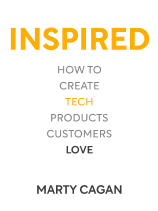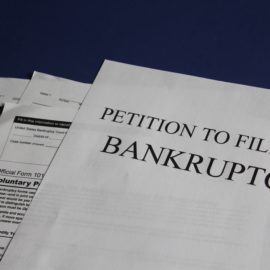

This article is an excerpt from the Shortform book guide to "Inspired" by Marty Cagan. Shortform has the world's best summaries and analyses of books you should be reading.
Like this article? Sign up for a free trial here .
What are the three product framing strategies? What are the benefits of framing during the product development process?
The purpose of product framing is to make sure the product development team is on the same page, and to identify the risks the company will be taking during the product discovery process. There are three methods for doing this: opportunity assessment, the customer letter technique, and startup canvas.
Learn about each of the three product framing techniques below.
Product Framing
Framing helps us identify underlying issues with proposed products. Some product discovery is straightforward—we know there is a specific problem to solve. However, for the more complex questions of discovery, framing is essential. It has two specific goals:
- Make sure the whole team is aligned and understands what the objective is or what problem we’re trying to solve.
- Find the risks that the company will take on during discovery. These could be risks related to value, usability, feasibility, or business viability. The risks can include questions ranging from whether the company has the money to pay for the creation and rollout of the product to whether the product is ethical.
We’ll go over three product framing strategies—from an opportunity assessment, which is most helpful when asking simple discovery questions, to a startup canvas, which works for companies trying a completely new product or strategy:
Opportunity Assessment
Opportunity assessments answer four questions to determine feasibility:
- What’s the business objective of the product? The product needs to help with one of your team’s objectives—for example, a tech company, which previously had most of its sales come from men, might launch a product that it hopes will interest women.
- What does success look like? Quantify this. Using the same example, success might be 40% of that company’s products are bought by women in the next calendar year, up from 25% before the launch.
- What is the customer problem the product can solve? Again, focus on the customers and the problems they have first and internal successes second. Let’s say the company is a sports gambling website that catered to men’s sports. The new product caters to other kinds of gambling, including on women’s sports, that interest women more.
- Who are the customers for the product? What segment of your overall customer base, or the overall base of consumers around the world, are you targeting? The customers are generally young people with a disposable income.
You’ll use this framing technique for most product discovery. It’s for the simpler questions of discovery.
Customer Letter
In the customer letter technique, product managers imagine a letter from a satisfied customer, which helps them better understand their goals. Using the technique, you’ll work backward. Begin by writing a (fictitious) letter from a satisfied customer who has tried your new product. Why does she like it? What problems does it solve? Then, build your discovery strategy around the letter. Ask how do we make this letter come true? How do we solve these problems?
This technique is well-suited to larger projects with overlapping goals because in working backwards, product managers can understand how their goals dovetail into customer satisfaction. A project may attempt to solve multiple problems for a customer in an effort to make her more satisfied overall.
Startup Canvas
The startup canvas framing technique is useful for quickly highlighting the biggest risks of starting a new company or product line.
(Shortform note: The startup canvas is a one-page template that allows you to examine your concept from various perspectives. Use a section or column of the page to define the problem you’re attempting to solve, and further sections for your solution, the unique value of your idea, and why customers will react well to it. You can add as many sections as necessary.)
Startups have many questions, like how to raise or make money, how to find customers, and how to build a new line/company from scratch. Rather than creating a full business plan, though, you can use the startup canvas as a leaner option.
The biggest risk for startups is generally related to value. You’re looking for something that your customers will buy, but it’s difficult to know whether they will be willing to do so. Plus, if you’re competing in an existing market (which the grand majority of companies, even the new ones, are), your product needs to be substantially better than your competition’s in order for people to feel justified in switching.
Take a look at the market, the big players, the risks, your own product and financial stability, and answer all of the questions in the previous two frames as well. Once you’ve identified your risks, whether the effort is feasible will become clear.

———End of Preview———
Like what you just read? Read the rest of the world's best book summary and analysis of Marty Cagan's "Inspired" at Shortform .
Here's what you'll find in our full Inspired summary :
- A two-step plan for creating and sustaining successful technology products
- Why product managers are so important in product development
- How to avoid some of the biggest pitfalls that most tech companies fall into






